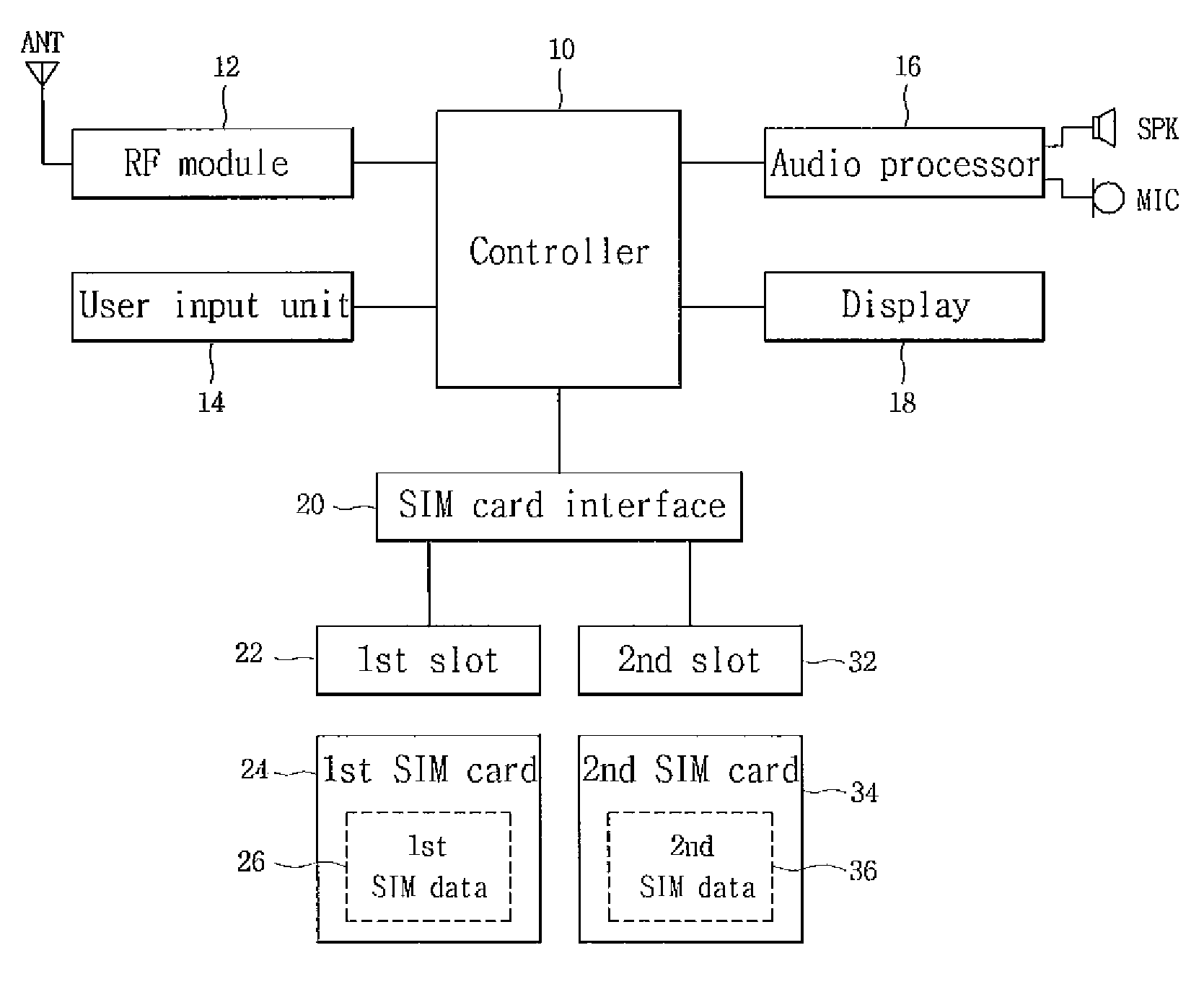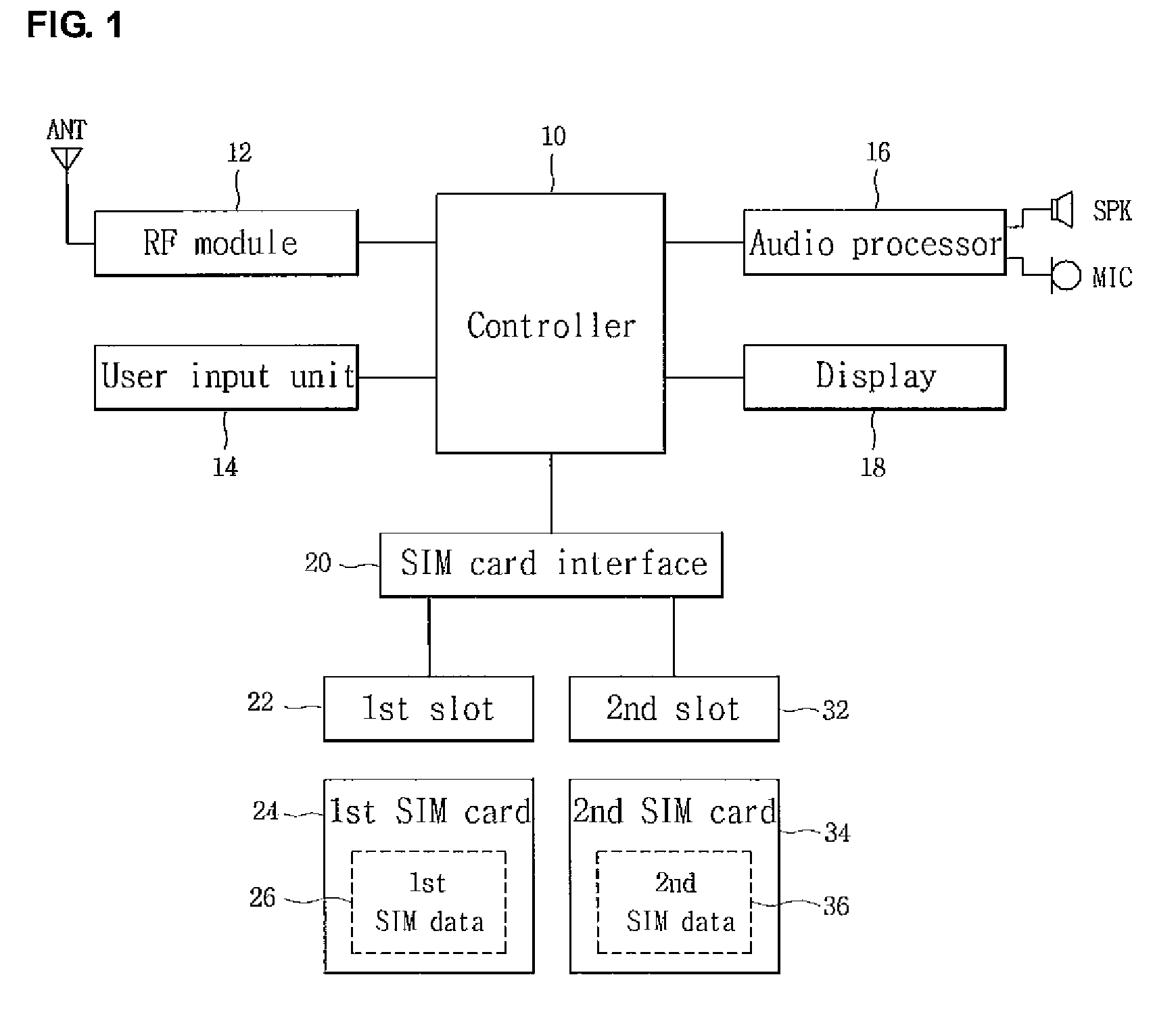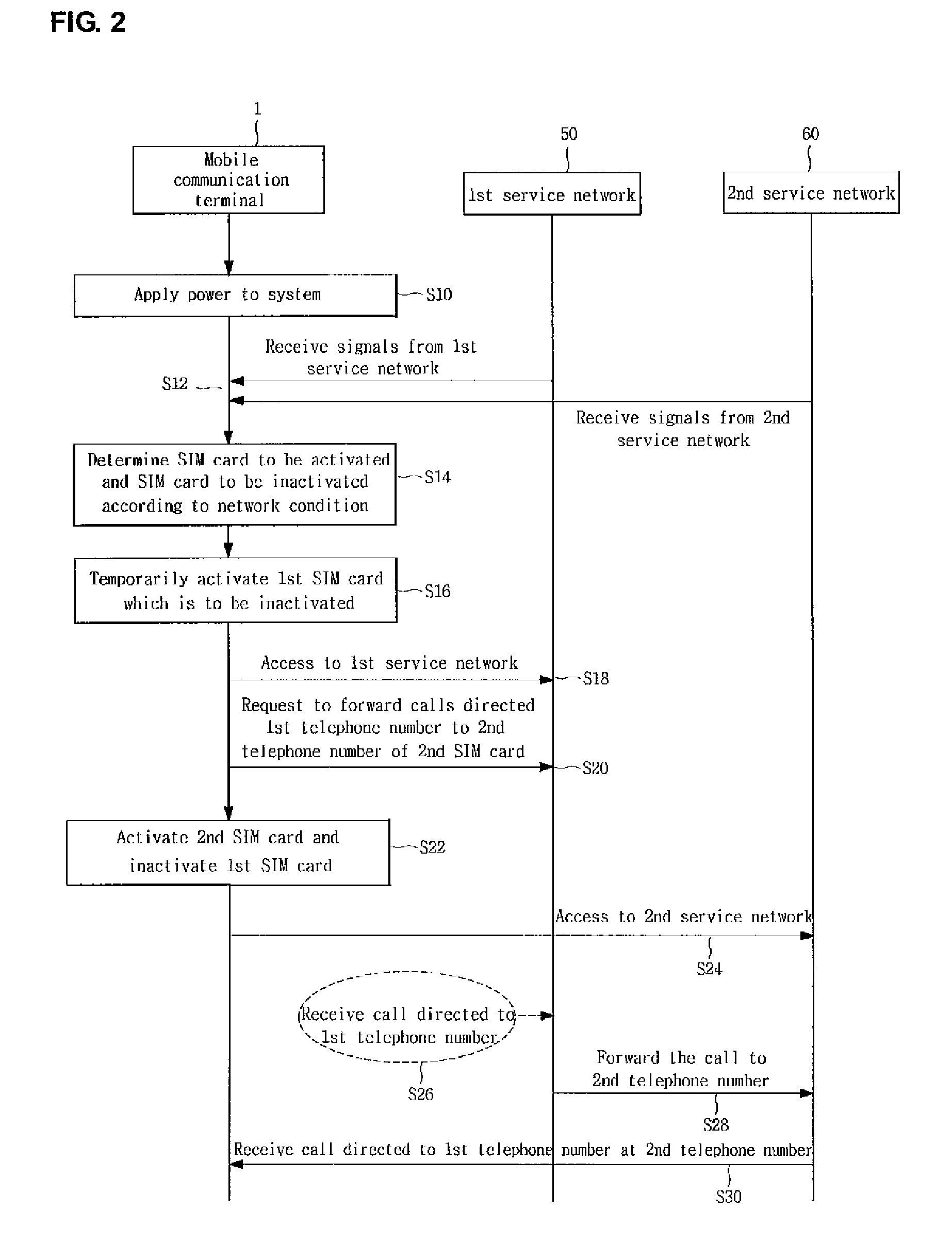Service setting for mobile communication terminal
a mobile communication terminal and service setting technology, applied in the field of mobile communication terminals, can solve the problem that users are unable to receive calls or messages on deactivated sim cards
- Summary
- Abstract
- Description
- Claims
- Application Information
AI Technical Summary
Benefits of technology
Problems solved by technology
Method used
Image
Examples
Embodiment Construction
[0020]Hereinafter, exemplary implementations of service setting for a mobile communication terminal will be described in more detail with reference to the drawings.
[0021]Turning first to FIG. 1, which is a block diagram illustrating a mobile communication terminal having multiple SIM cards. In particular, FIG. 1 illustrates the mobile terminal having first and second SIM cards 24 and 34 respectively mounted in first and second slots 22 and 32.
[0022]Further, the SIM cards 24 and 34 are generally issued and managed by a mobile communication service provider independently from a mobile communication terminal. In addition, the SIM cards 24 and 34 store SIM data 26 and 36 such as an International Mobile Station Identity (IMSI) for identifying a mobile station, an encryption key, positioning information, and telephone numbers. Further, the IMSI is unique information given to each subscriber, and includes a mobile country code (MCC), a mobile network code (MNC), and a mobile station identi...
PUM
 Login to View More
Login to View More Abstract
Description
Claims
Application Information
 Login to View More
Login to View More - R&D
- Intellectual Property
- Life Sciences
- Materials
- Tech Scout
- Unparalleled Data Quality
- Higher Quality Content
- 60% Fewer Hallucinations
Browse by: Latest US Patents, China's latest patents, Technical Efficacy Thesaurus, Application Domain, Technology Topic, Popular Technical Reports.
© 2025 PatSnap. All rights reserved.Legal|Privacy policy|Modern Slavery Act Transparency Statement|Sitemap|About US| Contact US: help@patsnap.com



